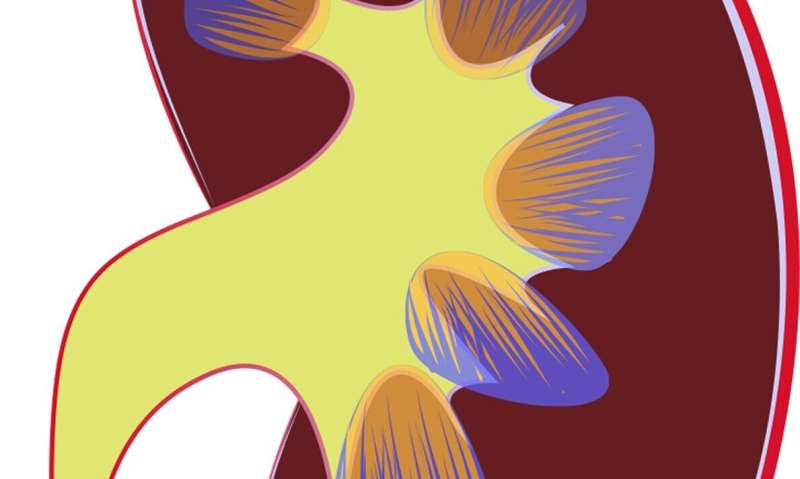Many patients with high priority for kidney transplants not placed on transplant waitlist

A new analysis reveals that may individuals with kidney failure who are most likely to benefit from kidney transplants are not being expeditiously placed on the transplant waiting list in the United States. The analysis, which appears in an upcoming issue of JASN, also uncovered significant racial and socioeconomic disparities in such waitlisting.
Kidney transplantation is the best treatment option for most individuals with kidney failure, but receiving a transplant involves many steps, including being referred to a transplant center, undergoing evaluations for transplantation, and being placed on the transplant waiting list. Changes made several years ago to kidney transplant allocation system included the use of the Estimated Post Transplant Survival (EPTS) score, designed to identify candidates with the longest expected post-transplant survival and preferentially allocate the highest quality kidneys to these patients. As a result, younger candidates without other medical problems who have not had a prior transplant and with little or no time on dialysis have lower scores. Candidates with scores of 20% or lower-"top 20%" EPTS status—have preferential access to quality deceased donor kidneys before other candidates. Importantly, a person's EPTS score changes over time such that patients will lose their top 20% status in the future.
To examine the extent to which patients with top 20% EPTS status are being placed on the transplant waiting list, Jesse Schold, Ph.D. (Cleveland Clinic) and his colleagues examined data from the Unites States Renal Data System for all U.S. adults who were waitlisted before starting dialysis (called preemptive listing) or who initiated dialysis in 2015 through 2017.
The investigators identified 42,445 patients with top 20% EPTS status: 7,922 were preemptively waitlisted while 34,523 initiated dialysis. The team found that less than half of eligible patients with top 20% EPTS scores were placed on the transplant waiting list. Specifically, only 37% of patients who initiated dialysis with top 20% EPTS status were waitlisted within 3 years. African Americans, individuals without commercial health insurance, and residents of low income neighborhoods were less likely to be waitlisted.
Also, 61% of patients initiating dialysis lost their top 20% EPTS status within 30 months, compared with 18% of preemptively-listed patients. Deceased and living donor transplantation rates within 3 years were 5% and 6%, respectively, for patients who initiated dialysis, compared with 26% and 44% for preemptively-listed patients.
"The results indicate that there are numerous patients with kidney failure who would qualify for top 20% status but are not placed on the waiting list. This is important given the high likelihood that these patients would benefit from transplantation and that they will lose top 20% status in the future," said Dr. Schold. "As such, expedited placement on the waiting list for these patients is critically important."
Dr. Schold also stressed the importance of addressing the racial and socioeconomic disparities revealed by this study. "These results are important to emphasize the need to develop more effective education, interventions, and policies to expedite access to transplantation for patients who would benefit and to attenuate longstanding disparities in these processes of care," he said.
More information: "Patients with High Priority for Kidney Transplant Who Are Not Given Expedited Placement on the Transplant Waiting List Represent Lost Opportunities," JASN, DOI: 10.1681/ASN.2020081146


















